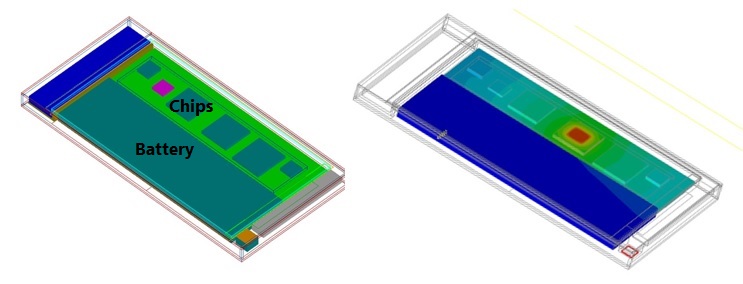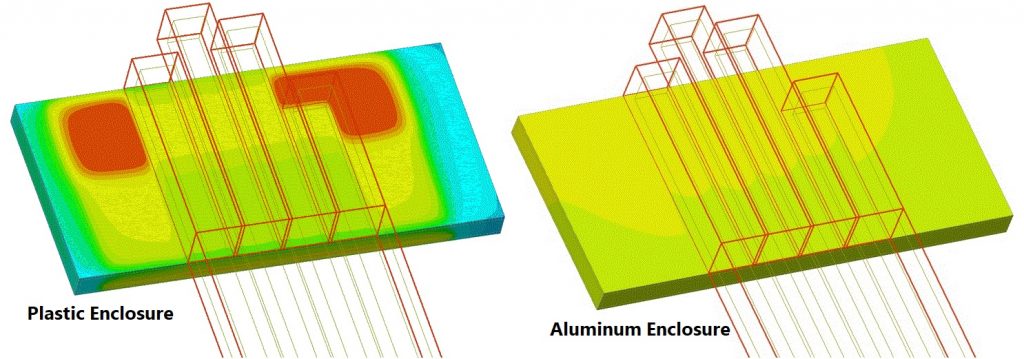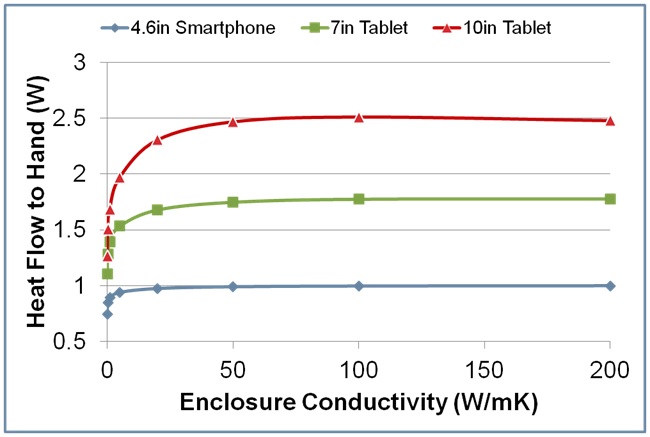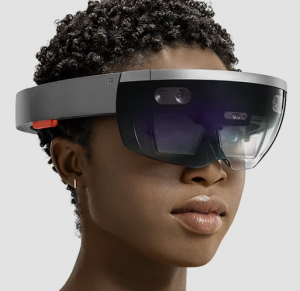Thermal Design of Mobile Devices
In this article, by thermal design of mobile devices, we mostly mean the thermal design of handheld devices such as smartphones and tablets. The main characteristic features of these devices are that they are mobile and handheld, and they are meant to be used on the go. They are also small and used closer to the body than other devices. From a thermal management point of view, these devices pose significant challenges in mobile thermal design because of both their size and usability.
In general, handheld devices are cooled passively with the proper electronics cooling solutions – because their size allows no space for active thermal management solutions. Usability considerations also exclude noisy elements such as fans and vents from their design. They are generally sealed and depend on heat spreading and natural convection for cooling.
In handheld thermal design, there are two main issues that we must pay attention to. These are junction temperature and skin temperature issues. The effectiveness of our thermal solution depends on how we handle these two issues. The ideal thermal solution of handheld devices must meet two objectives: the junction temperature of critical components inside the system must be below design limits, and the design must also maintain a skin temperature below ergonomic thermal limits at all times. Given their size and design limitations, these objectives are by no means easy to achieve. It usually involves a lot of heat spreading and careful selection of materials.

Managing Junction Temperature
Today’s handheld devices are performing more and more functions. They are performing the functions of yesterday’s large computers but at a fraction of device volume and cost. However, this has come at the expense of power density, which has been increasing over the years, especially in critical components such as processors. As a result, the junction temperature of such key components can increase quickly, exceeding design limits within minutes of operation. In smartphones, this usually triggers system throttling by the built-in power management software, which slows down the system and affect usability as well as the AnTuTu scores, one of the performance benchmarks the phone industry cares about.
The key to a successful thermal design of mobile devices is heat spreading. Given that all other thermal solution options are off-limits, the heat must be spread within the system as much as possible, ideally approaching isothermal limits. By spreading the heat within the system, we lower the junction temperature of key components, as well as enhance heat dissipation to the environment.
So, how do we spread the heat? The answer is the system must be designed for effective thermal conduction at all levels, from component level to system level. It should start from the key heat-producing components such as the processors and wireless components. These components should not only be designed for effective thermal conduction internally but also connected to their immediate surroundings effectively. That way, the heat produced is spread immediately, allowing key components to work at lower overall temperatures.
In managing the junction temperatures within handheld devices, there are a few areas that are of critical importance. They include the nature of solid materials, interface materials, surface conditions, and heat spreaders if any.
Solid materials
Heat spreading is a function of primarily one variable: thermal conductivity. The higher the thermal conductivity, the greater the spreading. Therefore, when building components and subsystems where junction temperature is an issue, it is important that we choose materials of higher overall thermal conductivity whenever possible. There are functionality, weight, cost, and other considerations, but the more thermally conductive a component is, the better the heat spreading. If the component itself cannot be made more conductive, we may consider reinforcing the overall thermal conductivity by surface treatments, such as external heat spreaders and the like.
Interface materials
Interfaces between mating surfaces are pores filled with air. Unless otherwise filled by interface materials, these air pockets are kind of thermal heat insulation and will result in a sharp temperature drop at the interface, resulting in a higher junction temperature on the other side. Therefore, any interface between components dissipating a significant amount of power must be filled with the appropriate interface material. Interface materials come in different forms and thermal conductivities. They include gels, pads, grease, etc.
Surface conditions
Radiation plays a small, but important part in passively-cooled systems, and it should not be ignored. Radiation heat transfer depends on surface emissivities, among other things. The emissivity, in turn, depends on surface conditions such as paint, rough or smooth surfaces. Shiny metallic surfaces usually have low emissivities and are poor radiators. On the other hand, painted surfaces (with almost any color) have higher emissivities and are best for radiation heat transfer. Hence, to ensure that we have greater radiation heat transfer, we should treat surfaces of high power devices appropriately.
Heat spreaders
We use heat spreaders to enhance conduction and heat removal in thermal design of mobile devices. These materials usually have much better thermal conductivities than the base material on which they are attached. Heat spreaders come in different forms: flat plates, foils, heat sinks, laminates, paints, etc. When attached to a base material, the heat spreader reduces the peak temperature and enables the component to dissipate heat at a lower overall temperature. In mobile devices, there two areas where heat spreaders are most often used. These are the processor and the back cover areas. In both cases, graphite and/or copper foils are used to prevent high spot temperatures. In selecting heat spreaders for mobile devices, thickness and weight issues are very important considerations. Thinness and lightweight are premium qualities in these devices.
In handheld devices, the highest temperature is usually is inside the processor. Although small in size, the temperature inside the processor is no means uniform. Inside that tiny component, most of the heat is generated only in a few areas on the die – the active side of the die. That active side is divided into various areas of functionalities, such as logic, graphics, IO, etc. Some of these areas, including logic, dissipate more heat than others. Hence, before conducting any thermal analysis, it is important that we have the right power distribution data in hand. With this information, we can determine the extent of junction temperature excursions and the heat spreading required.


Managing Skin Temperature
Skin temperature distribution is one key metric of the thermal design of mobile devices. This is crucial because it affects usability. Users cannot tolerate high skin temperatures in handheld devices. In judging what is acceptable skin temperature, there are two issues the designer must deal with in handheld thermal design. One is the temperature distribution on the enclosure. The other is how that temperature is perceived by the human body. Because the two are different.
Skin Temperature Distribution
Ideally, the skin temperature must be uniform. It is better to have a uniform, but lower overall temperature than high and low temperatures on the same enclosure. Plastic is the material of choice for enclosures. Plastics are lightweight and inexpensive. However, plastics have poor thermal conductivities. On their own, plastics cannot spread the heat enough to achieve near isothermal conditions. This is the reason why handheld designers use heat spreaders such as graphite and copper foils on the back of enclosures. The additional heat spreader comes with penalties, namely increased thickness and cost. Therefore, it is best to select the thinnest possible heat spreader, and it must have the necessary adhesive for a smooth and seamless application on the enclosure. In some cases, designers use metallic enclosures such as magnesium to achieve the same goal. Although the need for additional heat spreader and thickness is eliminated, this choice comes with its own disadvantages due to poor thermal ergonomics.
Ergonomic Considerations in Handheld Thermal Design
Touch comfort does not depend on just the temperature. The nature of the material being touched is also important. Thus, plastics and metals at exactly the same temperature do not feel the same way when touched by the human body. In general, metals feel a lot hotter than plastics. Or, vice versa in a cold environment. As discussed by Dr. Mulugeta Berhe in the paper titled “Ergonomic Temperature Limits for Handheld Electronic Devices, 2007,” when the human body touches metal surfaces, it draws more heat than when touching plastic surfaces. The reason is that metals have much higher thermal conductivity than plastics. As a result, when one touches a metallic surface, the body is not only cooling the touched surface area but also pretty much the whole metal body. As soon as a part of the metallic surface is touched, heat is conducted from the whole metallic body to the touched surface. In the case of plastics, the touched surface will have a distinctly lower temperature than the rest of the plastic body. Because of its poor thermal conductivity, heat does not flow from far ends of the plastic body to the touched area. In other words, when one touches a plastic body, one is cooling the plastic body locally, rather than the entire body. Figure 2 above shows skin temperature profile differences between plastic and aluminum enclosures after being touched by hand. Figure 3 shows the effect of enclosure thermal conductivity on heat flow to the hand. For this reason, Dr. Mulugeta Berhe found the acceptable ergonomic temperature limit for handheld devices varies by enclosure material. For plastics, the temperature limit was found to be about 45C. For Aluminum enclosures, it was lower, around 41C. When looked from just a heat spreading point of view, metallic enclosures make sense for handheld devices. However, when the overall touch comfort is considered, a metallic enclosure is actually not the best choice.
A Better Strategy
As discussed above, plastic enclosures are better for touch comfort but bad for heat spreading. The opposite is the case with metallic enclosures. Hence, we need a better is strategy. The most common strategy followed by thermal designers for thermal design of mobile devices is to use plastic enclosures, but with heat spreaders such as graphite foils attached on the inside. That way, the heat is spread on the enclosure without affecting touch comfort on the outside. Of course, there is an added cost and thickness in this case. The thickness issue can be minimized by having metal-plastic laminate or surface-treated metal for better touch comfort. The advantage here is that the thickness will be lower and the whole body will be seamless.
Touch comfort may also be enhanced further by adding some kind of texture on the outer surface if industrial design (ID) allows it. This is because heat transfer is proportional not only to the temperature but also to the actual area of contact. By having texture, we effectively reduce the contact area, and hence the heat transfer to the body. Another variation of this approach can be a solid enclosure material of higher conductivity with pores or air pockets inside. This will also minimize heat flow into the body while spreading the heat laterally.
Display Cooling
Another component that may need some cooling in handheld devices is the graphic display. In many cases, the display is cooled by itself facing air on the other side of the device. However, displays can exhibit a significant non-uniformity in temperature. This is somewhat reduced by the metal cover at the back of the display. In some cases, a heat spreader such as graphite is attached to this metal cover, which helps lower the temperature non-uniformity. The drawback with the additional heat spreaders is, of course, higher overall thickness and cost.
Wearables
Special classes of mobile devices are wearables. These include virtual reality devices and watches. Examples of virtual reality devices are the Hololens from Microsoft, the Google Glass, Oculus and the likes. These devices are more intimate to the human body than the handheld varieties. For that reason, the thermal requirements are also more stringent, especially from an ergonomic point of view.
All of the above discussions about the need for extensive heat spreading and other thermal design considerations still apply to these devices. However, they also require a greater degree of isolation (insulation) as they are used so close to the body. The glass varieties, in particular, are to be worn close to the eyes, which is one of the most sensitive areas of the human body. This will require a very tight temperature specification on all surfaces facing the body. According to user trial studies conducted by this author, the temperature of these surfaces should as close to body temperature as possible. Otherwise, users cannot tolerate them for long periods of use.
To insulate the body from high temperatures, various approaches can be used. The simplest one is to use foam to serve both as a cushion and a thermal barrier between the device and the body. In more exotic cases, designers can think of vacuum insulation combined with highly reflective surfaces to break radiation heat transfer.
Issues such as weight and noise are also of concern with such devices, complicating material selection and active cooling considerations.

Thermal Analysis in Handheld Thermal Design
As with other devices, the proper thermal design of mobile devices requires extensive thermal analysis. The thermal analysis for such devices must take the full effects of passive cooling into account. This includes natural convection and radiation effects. Usually, the devices are modeled sitting on some surface, with 1 mm or so gap in between. It can also be modeled suspended in air, although that will give a more optimistic scenario. Because radiation accounts for 25-50% of the heat transfer, we must use accurate emissivity factors for all surfaces. Also, we must use the right radiation models, among the several available in today’s analysis tools.
Thermal Design of Mobile Devices Consulting
If you have any questions about this article, or if you are looking for thermal consultants to help with your project, including the thermal design of mobile devices, please contact us at info@thermalds.com. One of our thermal consultants will get back to you promptly.
Tags: thermal design of mobile devices, electronics cooling solutions, handheld thermal design, thermal consultants, thermal analysis, thermal modeling, thermal consultant, thermal management consultants